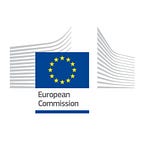Preventing famine in Somalia, a race against time
Somalia is on the brink of famine. To avoid a repeat of the 2011 catastrophe which left more than 250 000 Somalis — mostly children — dead, humanitarian aid is being stepped up. The need to act fast and gain access to communities has been among the lessons tragically learned. Aid is reaching many but not all: millions of people in conflict-torn areas remain inaccessible.
After they saw their crops wither and their livestock die, 600 000 Somalis fled their homes.
In addition to the more than one million people previously displaced as a result of violence, almost one-eighth of the population is now uprooted. Most of the displaced are women and children.
Aid is being massively scaled up in a race against the clock to prevent famine. Donors have been quick to provide funds and the EU has released more than €78 million in humanitarian funds alone. Although expensive, the trucking of water to communities which are experiencing extreme drought has been vital.
1.7 million Somalis are already receiving some form of food assistance. The EU funding is prioritising cash transfers and electronic vouchers so that people are freer to get what they need from shops and markets. Half the Somali population needs humanitarian assistance to survive.
One million children are expected to be acutely malnourished in 2017. It’s all hands on deck to reach and treat 200 000 of the severest cases.
Health and nutrition centres are being set up in the camps for displaced where families arrive exhausted and weak after days travelling mostly on foot.
The absence of safe water is conducive to the spread of diseases such as measles and cholera. An outbreak of cholera and diarrhea has resulted in 25 000 cases with 460 deaths in the first three months of the year. Emergency health and water teams are roving across the affected regions, trying to contain the outbreak and ensuring safe water supply.
Many elderly people are exhausted after travelling days on foot, doing their best to keep up with their family and neighbours. People admit to leaving the elderly behind, with hardly any food, because they were unfit to make the strenuous journey.
Insecurity is the main impediment to scaling up aid. After decades of unresolved conflict, millions of people continue to live in rural areas off-limits to aid organisations.
Families are massively abandoning their homes in the drought-stricken regions and heading for cities or enclaves where aid is available. With hundreds of thousands of lives at stake, humanitarians are asking all parties to the conflict to grant them unhindered access and to let people move freely.
The majority of people arriving in the displaced camps are women and children. Men and boys are said to have stayed behind to tend to the remaining livestock or to take care of the elderly and the infirm. In the worst affected areas, up to 75% of the livestock has died. The fear is that the remaining animals will be swept away, or succumb to hypothermia and diseases once the rains start.
Following the announcement in 2016 that the Dadaab refugee camps in Kenya would be closed, there has been a spike in the number of people returning to Somalia. Many of them find conditions less favourable than they hoped.
It is a stark contrast going from being a refugee in a long established camp to becoming a ‘returnee’ in a country that is struggling with conflict, food shortages, drought and cholera. Some returnees’ children are being treated for severe malnutrition in the displaced settlements.
Rain or no rain, the after-effects of three consecutive failed harvests will be felt for months to come. The EU has allowed its humanitarian partners to step up and expand their relief operations. The aid effort will need to be sustained until at least the end of 2017.
By Anouk Delafortrie, Regional Information Officer, EU Humanitarian Aid.
Learn more about what the Commission is doing in Somalia.
